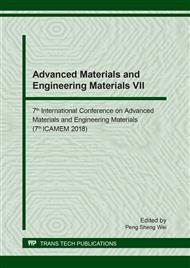p.22
p.27
p.32
p.37
p.44
p.50
p.55
p.60
p.65
Improvement Filler-Rubber Interaction and Mechanical Properties of Silica/NR Vulcanizates by Using Masterbatch Processing
Abstract:
Due to the dispersion of silica and reducing filler-filler interaction, the improvement of filler-rubber interaction was enhanced the physical properties of silica/NR compounds. This research was then focused on the production of silica masterbatches with surface treatment by surfactant to enhance the silica dispersion. The silica dispersion examined by scanning electron microscopy (SEM)c and the mechanical properties of vulcanizates prepared from the masterbatches were compared with those prepared by a conventional direct mixing method. The mechanical properties of silica/NR masterbatches exhibited greater modulus, tensile strength and hardness compared to the corresponding conventional mixes. A better silica/NR interaction of silica/NR masterbatch was achieved confirming by higher the bound rubber content and lower Payne effect, leading to the greater mechanical properties.
Info:
Periodical:
Pages:
44-49
Citation:
Online since:
August 2018
Authors:
Keywords:
Price:
Сopyright:
© 2018 Trans Tech Publications Ltd. All Rights Reserved
Share:
Citation:


